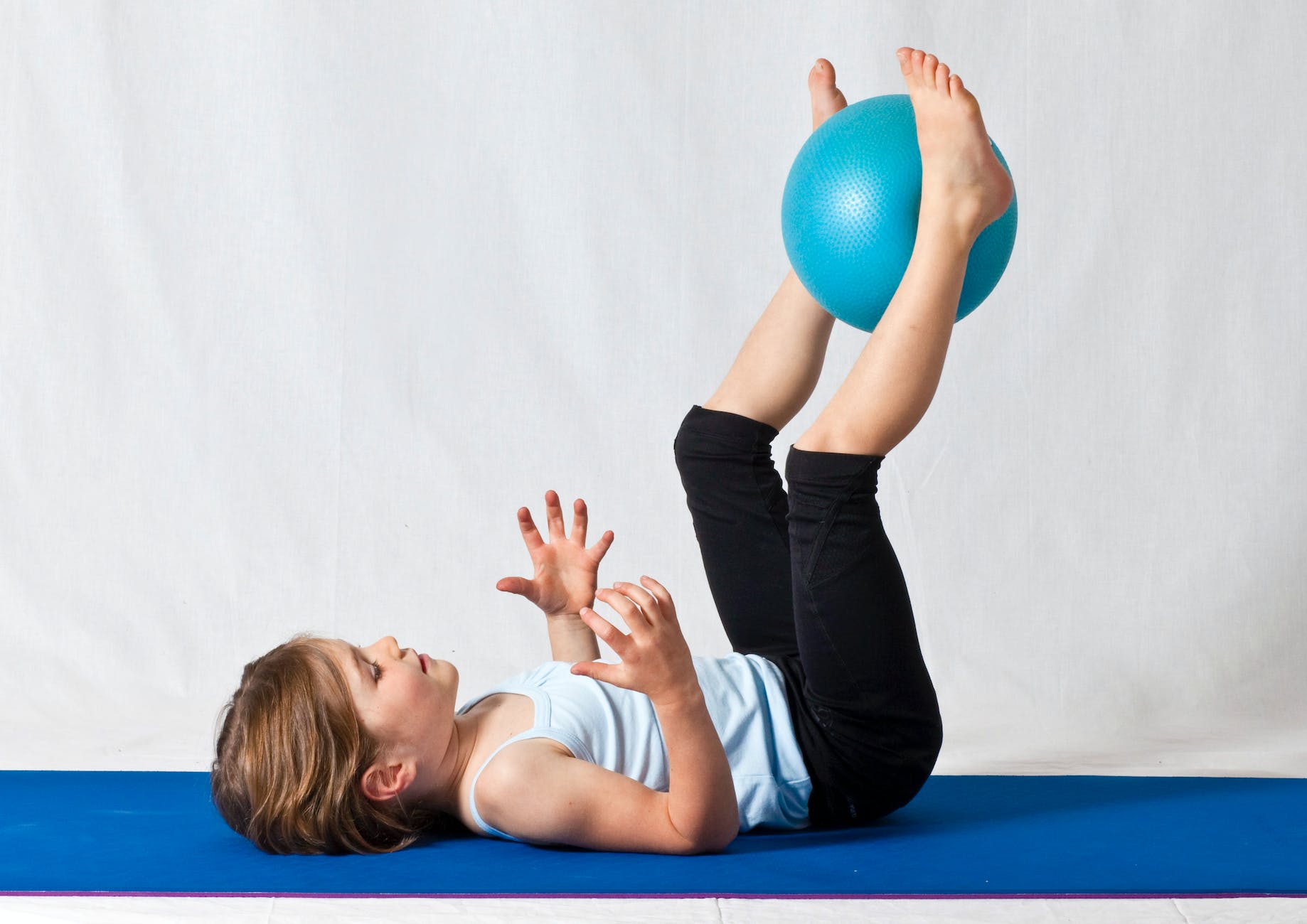
The Surprising Link Between Core Strength in Children and Improved Attention and Handwriting
Explore the untapped potential within your child’s core strength to enhance their attention and fine motor skills.
This insightful article delves into the transformative benefits of core strength in children and how it can be the key to unlocking their cognitive abilities.
Gain valuable tips and exercises to strengthen your child’s core and witness the remarkable improvements in their focus and coordination.
This post was created by Marra Robert, OTD, OTRLand contains affiliate links
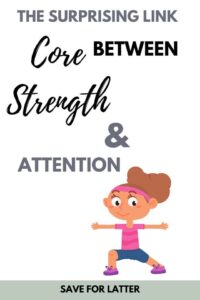
Recently I’ve been really interested in looking at how connected everything is with relation to our physical bodies, mind, mental health, and our environment.
If we isolate one area we are addressing or a challenge we are trying to tackle, we are missing important pieces to the puzzle. This is true when we look at attention and handwriting, two common challenges many children struggle with.
Hi! My name is Marra, and I am a mama and a pediatric occupational therapist. I’ve spent years working with children who have diverse developmental needs and helping them achieve meaningful goals while supporting their families.
I have worked in both an outpatient clinic and early intervention therapy with children ages birth to 3 years old.
Occupational therapy is a holistic, client-centered profession that works with individuals to help improve their participation in activities that are meaningful to them.
For children, this includes play, socializing, spending time with family, going to school, and engaging in activities of daily living such as eating, bathing, getting dressed, and sleeping.
I love occupational therapy because we look at so many different factors and how they may impact the challenge we are addressing.
Two of the most common challenges the children I work with face are attention and handwriting or fine motor skills. Fine motor skills are required to do any task involving our hands, such as handwriting, using scissors, getting dressed, playing with toys, and so much more.
When working on these goals with children and their families, I would repeatedly see a strong link between attention, handwriting, and core strength.
The children who struggled with attention and handwriting oftentimes also had a weak core. Before diving into this topic, I want to share a story with you.

JOEY'S STORY
One of my favorite children I worked with, let’s call him Joey, had Down Syndrome, and I provided occupational therapy services to him once a week for many years. I grew very close to him and his family.
Similarly to other children with Down Syndrome, Joey presented with global developmental delays, and we had many goals in different areas.
Joey had to work extra hard and long to accomplish goals that may seem easy to others. Because of how hard he worked, he often fatigued quickly.
Well, we were working on Joey’s letters, a task that was really hard for him, and he would become frustrated easily. I found him becoming more and more frustrated and enjoying therapy less and less. I knew we needed a break.
So for his summer break, I decided to switch things up, and we took a break from those tricky letters. For that summer, we focused on strength, specifically in his core and postural control. I knew the power of that link.
Core strength relates to so many skills and activities we do every day. So our summer was filled with challenging obstacle courses addressing his core strength.
When summer ended, and Joey had returned to school for a few weeks, his mother brought something to my attention. She informed me that Joey’s teacher had told her that she had noticed a significant improvement in Joey’s seated attention and his letter formation this fall compared to last spring.
Joey’s mom thanked me for working with him on his letters and attention all summer. This is when I told her that we hadn’t worked on his letters or his attention at all this summer, not once.
She appeared surprised to hear that, so I explained to her the link between core strength, attention, and handwriting.
So let’s break it down. How does a child’s core strength matter when we look at their attention, handwriting, or other fine motor skills? First, we need to understand how children develop starting in infancy.

THE DEVELOPMENT OF CORE STRENGTH IN CHILDREN BEGINS IN INFANCY
Children develop proximal to distal or from the center of their body, the core, to the outermost part of their body, their fingers and toes.
This is why a baby first needs to learn how to sit before they can learn how to walk or use a spoon to feed themselves. The reason for this is that the muscles in our core and trunk stabilize and support the muscles in our hips and shoulders.
The muscles in our hips and shoulders stabilize and support the muscles in our arms and legs.
The muscles in our arms stabilize and support the tiny muscles in our hands that are responsible for the complex movements required for fine motor activities and handwriting. The core supports these skills. It’s all connected.
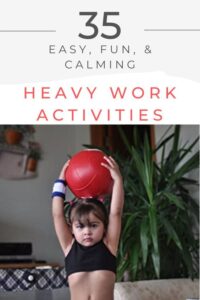
THE LINK BETWEEN CORE STRENGTH IN CHILDREN AND HANDWRITING
If a child has decreased strength in their core and their trunk, then these more complex fine motor skills will not have the support needed.
When practicing handwriting, it is recommended that a child sits in a chair that fits them with a backrest and both feet planted flat on the floor. This gives them the most support.
If you need some more convincing of this, tape a piece of paper on the wall so it is vertical, stand on one foot, and write your name. Do you notice a difference?
Let me know how it goes. This may seem silly, but this is the instability that a child experiences when they have a weak core. Ok, so that explains the relationship between core strength and handwriting, but what about attention?
THE LINK BETWEEN CORE STRENGTH IN CHILDREN AND ATTENTION
Well, it’s similar in that it relates to stabilization. Our bodies need movement in order to maintain homeostasis. This is especially true for children.
It is actually more challenging and requires more energy for us to remain still than for us to move. It requires more core strength to maintain a seated posture than to be constantly moving.
This is why some children with decreased core strength and postural control are constantly on the move. It is challenging for them to keep their bodies in one place for an extended period
When a child with decreased core strength is sitting at their desk and attending to the teacher or sitting at home trying to attend to their homework, or even sitting down to eat dinner, they are using so much energy to try and stabilize themselves in their chair. Sitting still requires a lot more energy for a child with decreased core strength.
Anything on top of that, such as attending, learning, handwriting, or talking, is a big task for them when they use all their strength and energy to stay seated.
Understanding this is important to avoid confusing a lack of attention with behavior for these kiddos. That way, we can advocate for their needs. to others who work with them or care for them.
It’s important to note that the use of sensory brushes should always be done under the guidance and supervision of a licensed occupational therapist.
These professionals can tailor the techniques and applications of the brushes to meet the specific needs of each individual. They can also provide guidance on how to introduce and incorporate the brushes into a comprehensive sensory integration plan.
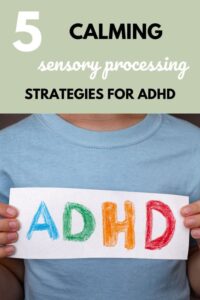
HOW TO HELP IMPROVE CORE STRENGTH IN CHILDREN.
The good news is that if we discover that decreased core strength is related to attention or handwriting difficulties for these children, we know how to help and strategies to implement to make these tasks a little easier for them.
The first thing we can do to help children struggling with decreased core strength is set them up for success. We need to assess their environments and implement strategies there first.
Let’s take a look at their seating first. Are they sitting in a chair that supports them? Is there a back support? Are there armrests? Can they firmly plant their feet on the floor?
The answer to all of these questions should be yes. If not, then you can move them to a more suitable seat or adapt their seat by either rolling up a towel to use as lumbar support or stacking some books on the floor so that their feet are firmly planted.
By stabilizing their seating, you can offer more support for the child. You can also have your child participate in many exercises to strengthen their core and help support their attention and handwriting.
PRACTICAL TIPS AND EXERCISES TO IMPROVE CORE STRENGTHEN IN CHILDREN
One of the main benefits of using balance boards is their ability to engage and strengthen the core muscles.
As kids work to maintain their balance on the board, they activate their abdominal and back muscles, leading to improved posture and stability. This can have a positive impact on their overall motor skills and coordination.
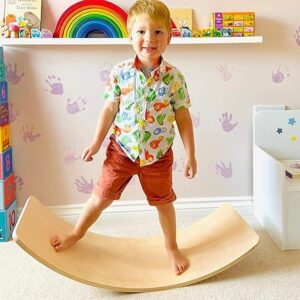
My favorite activity to do with children that not only strengthens their core but also enhances their fine motor skills and their attention are obstacle courses. Check out my blog on obstacle courses to learn more about how beneficial they are and how to build one your child will love.
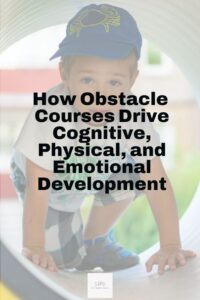
I also use the Bosu ball frequently in my therapy sessions, and the children have so much fun with this one. They like to practice standing on it or seeing how long they can balance on one leg while standing on it.
For an extra challenge, I’ll stick squigz on the bottom of it and have them bend down to remove it and stand back up to hand it to me, all while keeping their balance.
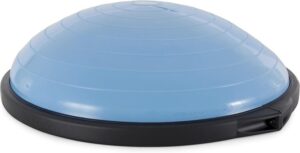
Tummy time! Yes, tummy time. You might be thinking that this is an activity for babies, but in fact, tummy time can be extremely beneficial for older kids as well.
Encouraging children to color, read a book, or do a puzzle while they are lying on their stomachs is extremely beneficial in the development of their core strength.
Make sure that both of their legs are straight behind them. If they bend one of their legs and lift their hip, this is a compensatory strategy, and their core isn’t working.
Yoga is extremely beneficial for core strength and attention, as well as having multiple other benefits, both physically and emotionally. I really enjoy using these cards when practicing yoga with children.
Visual timers provide a tangible and visual way for individuals with autism to better grasp the concept of time and effectively manage their schedules.
One of the key benefits of using visual timers is their ability to provide a clear and structured representation of time. Unlike traditional analog or digital clocks, visual timers offer a visual countdown that individuals with autism can easily understand.
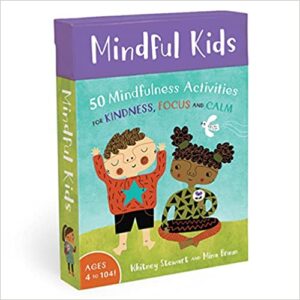
Exercising on a yoga ball is another great way to strengthen the core. I like to place puzzle pieces on one side of the ball and the puzzle board on the other side.
I then have the child roll on their stomach or back over the ball to get the puzzle pieces and then roll back to put it in the board. This is so great for stabilization and core strengthening.
One popular type of sensory mat is the textured mat, which features different textures, such as bumps, ridges, and grooves, that individuals can run their hands or feet over.
The varying textures provide a range of tactile sensations, helping to stimulate the sensory receptors and improve sensory processing abilities. This can be particularly beneficial for individuals with autism who may have difficulties with sensory integration and regulation.
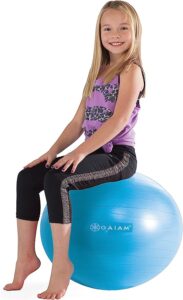
Balance beams and stepping stones are also great for strengthening the core. You can set them up independently or use them in obstacle courses.
For some children sitting still, attending, and working on handwriting skills can be extra challenging if their cores are weak. Implementing some of these core strengthening activities into a routine, it can have a big impact and help make these tasks a little less challenging for them
